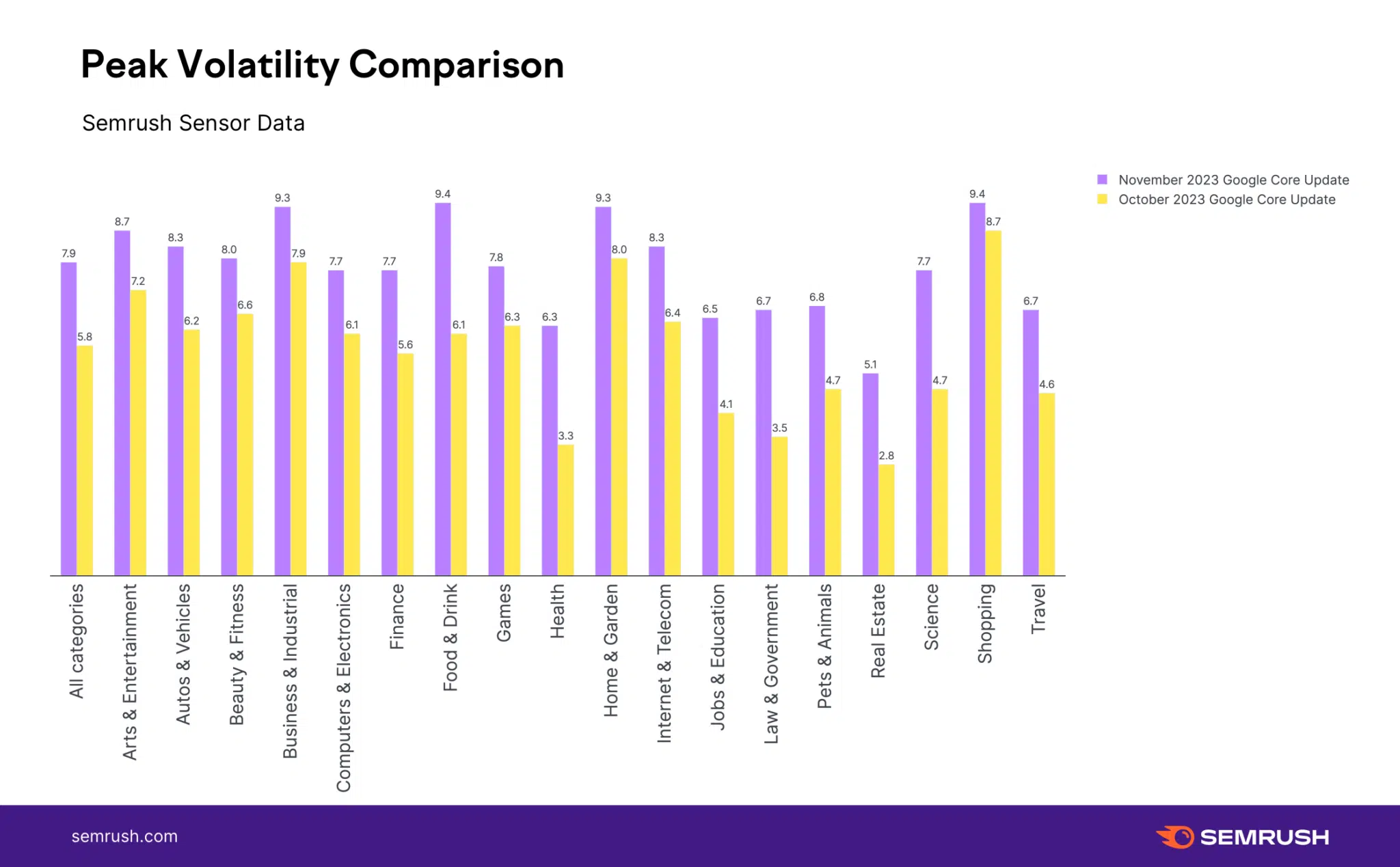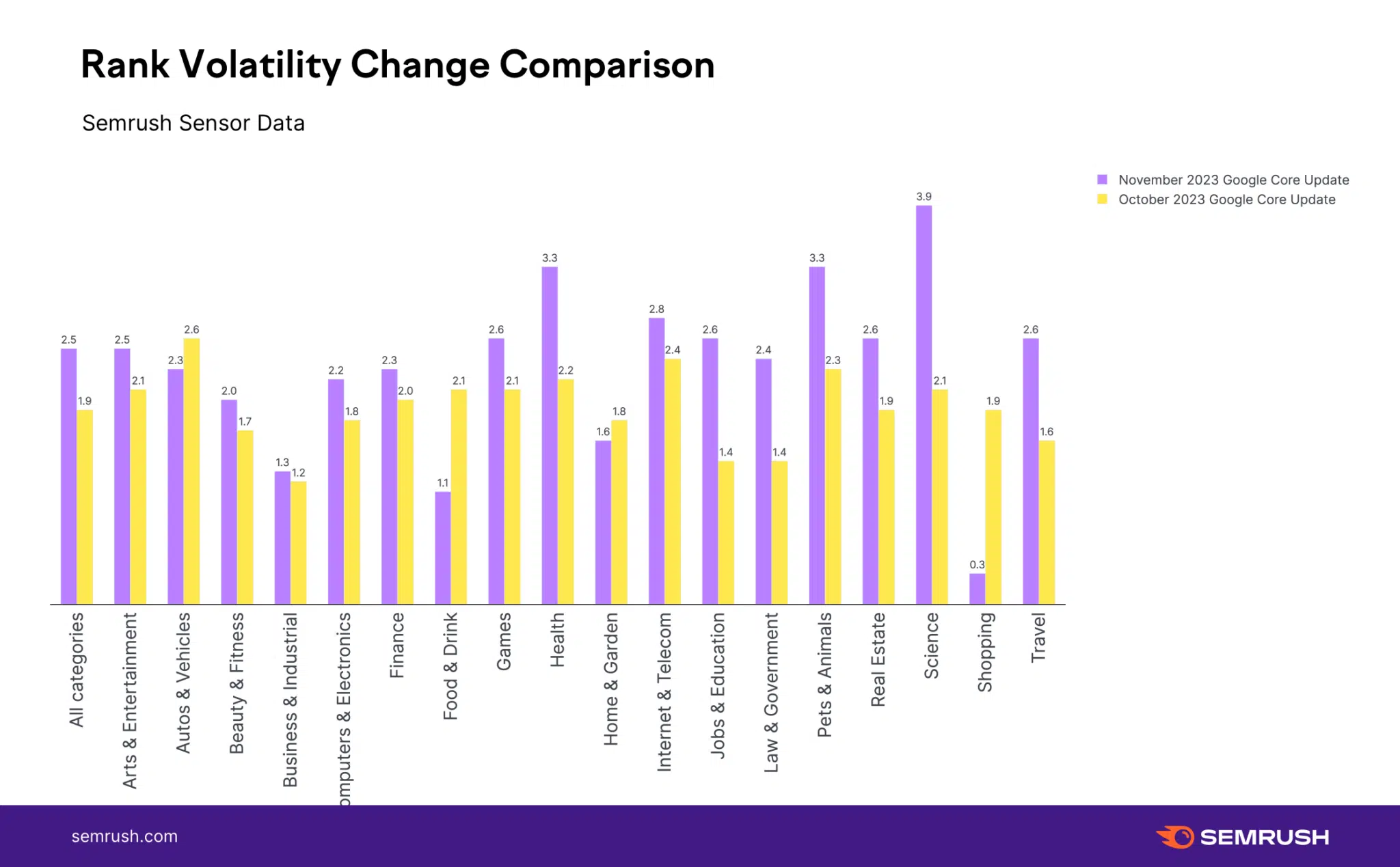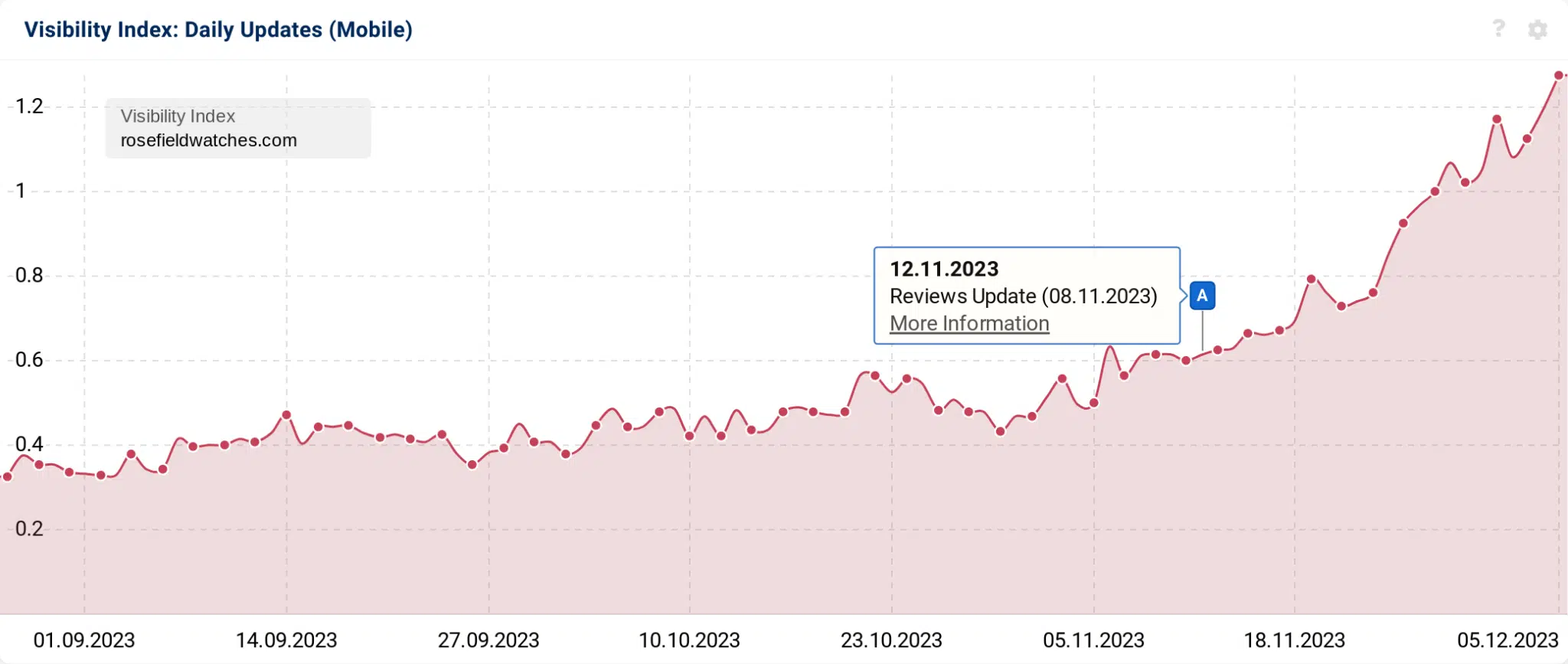Data providers: Google November 2023 core update was more volatile than the October 2023 core update
Keep in mind, the November 2023 Reviews update overlapped with this core update and is still rolling out.
Google’s November 2023 core update took about 26 days to fully roll out and was completed on November 28th. Now that the update is done, I wanted to share some data on how this November core update compared to the data on the October 2023 core update.
In short, the data shows that the November 2023 core update was more volatile than the October 2023 core update.
Overlapping updates. While the October 2023 core update had a corresponding October 2023 spam update overlap with it. The November 2023 core update has a corresponding November 2023 reviews update overlap with it. So the data can be a bit messy when trying to figure out which update caused what volatility.
Here is the timeline for those two updates:
- The core update started on November 2, 2023 and ended on November 28, 2023
- The reviews update started on November 8, 2023, and is still rolling out
Data providers on the Google November 2023 core update
Semrush. To try to focus or zoom in on the core update, Semrush pulled data from November 6 to November 8, prior to the Reviews update launched. Semrush peak volatility was 9.3 on November 7th, in terms of their Semrush Sensor data volatility tracker tool.
Mordy Oberstein, who presented the Semrush data to me, said that the “overall rank volatility picture is relatively similar” when comparing the October core update to the November core update. That is good in that it “makes looking at data points such as peak volatility a bit more relevant,” he added.
The November core update had higher peaks of volatility when compared to the October core update. It was 9.3 for the November core update and 7.9 for the October core update.
Here is a chart showing the peak volatility by niche/industry comparing November to October:

You can also break out the data to look at the increase in volatility relative to a baseline period. Yes, it shows November being more volatile:

But it is not that simple, “isn’t a sort of one-to-one spike match between the two updates,” Mordy Oberstein told us. “So to me, the difference in the peak volatility data between the two updates isn’t “other-worldly” necessarily,” he added. Just look at this chart showing the trend comparison:

Also, the percentage new (not seen before) ranking URLs within the Google Search top 10 placements that were not in the 20 positions prior to the November update looked like this. To compare, back in August Semrush saw 10.85% of top 10 results not ranking top 20 before the update where whereas back in March of 2023 that was at 8.7%. Now we are at 12.75%, here is that chart:

SimilarWeb. SimilarWeb’s SERP Seismometer also showed peaked volatility on November 7th with the number being at 71 on its scale of 100. Shay Harel from SimilarWeb said, “On November 5th, 3 days after Google announced the core update, Similarweb SERP Seismometer started identifying an increase in SERP fluctuations.”
You can see from the chart that the levels rose until the 7th and then calmed down over time:

They then calculated an average change of 4.43 positions across the SERPs when looking at global ranking changes. To put that into perspective, Similarweb plotted the average position changes for all the core updates since June 2021. When we look at the average fluctuations for the November update, we see that it has the highest average position changes since June 2021.
Here is that chart showing that:

When looking at ranking volatility by top three, top five and top ten positions in the Google search results, the November update was more volatile than the October update. The retail niche was the most volatile niche while the health niche was the least volatile, Shay Harel told us.

seoClarity. The folks at seoClarity gave us data from another perspective, how much did the search features change. It is unclear if core updates have an impact on a search feature showing up, so this is interesting. They plotted the biggest gainers and losers in terms of Google’s search results features comparing the week before the update began to the end of last week.
Again, I don’t think core update impacts a feature showing up or not but they do impact some sites showing up in some of those features (like Discover, top stories, etc). Here are the charts Mark Traphagen sent to me from seoClarity:


Sistrix. Steve Paine from Sistrix told us, “The overlapping changes in November are impossible to separate.” “Large changes across the SERPs can no longer be seen but there are continuing increases in some websites which might be related to the ongoing Reviews Update,” he added.
He did share an example chart based on the data from rosefieldwatches.com performance during this core update.

Other tools. There are a lot of Google search ranking volatility tools here is what they looked like after the core update finished rolling out over the course of the update:





Cognitive SEO (seems stalled):






More on the November 2023 core update
Community. On the Search Engine Roundtable, I did a bit of a roundup on what the community noticed across several different stories. Based on all I see from the community, this update was very big and the SEO industry was buzzing about it in a very big way
Previous core updates. Here’s a timeline and our coverage of recent core updates:
- The October 2023 core update was on October 5th and ended on October 19.
- The August 2023 core update was on August 22nd and ended on September 7.
- The March 2023 core update was on March 15th and ended on March 28th.
- The September 2022 broad core update was less impactful than previous core updates and finished on Sept. 26.
- The May 2022 broad core update was a significant and fast update.
- The November 2021 core update
- The July 2021 core update.
- The June 2021 core update, which was slow to roll out but a big one.
What to do if you are hit. Google has given advice on what to consider if you are negatively impacted by a core update in the past. There aren’t specific actions to take to recover, and in fact, a negative rankings impact may not signal anything is wrong with your pages. However, Google has offered a list of questions to consider if your site is hit by a core update. Google did say you can see a bit of a recovery between core updates but the biggest change you would see would be after another core update.
Why we care. It is often hard to isolate what you need to do to reverse any algorithmic hit your site may have seen. When it comes to Google core updates, it is even harder to do so. What this data and previous experience and advice has shown us is that these core updates are broad, wide and cover a lot of overall quality issues. The data above has reinforced this to be true. So, if your site was hit by a core update, it is often recommended to step back from it all, take a wider view of your overall website and see what you can do to improve the site overall.
Hopefully, your company and your clients did well with this update.
More on Google updates
You can read more of our coverage in Search Engine Land’s Google Algorithm Updates history.
Related stories
New on Search Engine Land